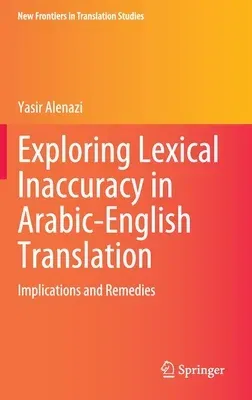Chapter 1: Introduction
1.1 Background
1.2 Statement of the Problem
1.3 Goals of the Study
1.4 Questions of the Study
1.5 Significance of the Study
1.6 Organisation of the book
Chapter 2: Literature Review
2.1 The Significance of Lexis
2.2 The Teaching of Lexis
2.3 Lexical Errors: Approaches to Examine Language Errors
2.4 Sources of Language Errors
2.5 A Brief Overview of Arabic Lexis
2.6 EA Studies on L2 Learners' Lexical Errors
2.7 Summary of the Identified Gaps in the Literature
Chapter 3: Research Design and Methodology
3.1 Introduction
3.2 Theoretical Framework: Error Analysis
3.2 Conceptual Framework: Lexical Error Taxonomy
3.3 Research Design
3.4 Summary and Conclusion
Chapter 4: Formal Lexical Error Analysis
4.1 Introduction
4.2 Quantitative Analysis and Description of Formal Lexical Errors
4.3 Discussion and Explanation of Formal Lexical Errors
4.4 Conclusion
Chapter 5: Semantic Lexical Error Analysis
5.1 Introduction
5.2 Quantitative Analysis and Description of Semantic Lexical Errors
5.3 Discussion and Explanation of Semantic Lexical Errors
5.4 Conclusion
Chapter 6: Implications for Language Learning, Translation, and
Language Teaching
6.1 Introduction
6.2 Implications for Language Learning
6.3 Implications for the Translation Studies
6.4 Implications for Language Teaching
6.5 A Summary of the Analysis Impacts on Language Learning, Translation
Studies and Language Teaching
6.6 Conclusion
Chapter 7: Summary, Conclusion, and Recommendations
7.1 Introduction
7.2 Overview of the Research Project
7.3 Summary of the Major Findings
7.4 Contributions of the Study
7.5 Recommendations for Teaching Vocabulary and Alleviating the
Related Language Errors
7.6 Limitations of the Study
7.7 Suggestions for Future Research

